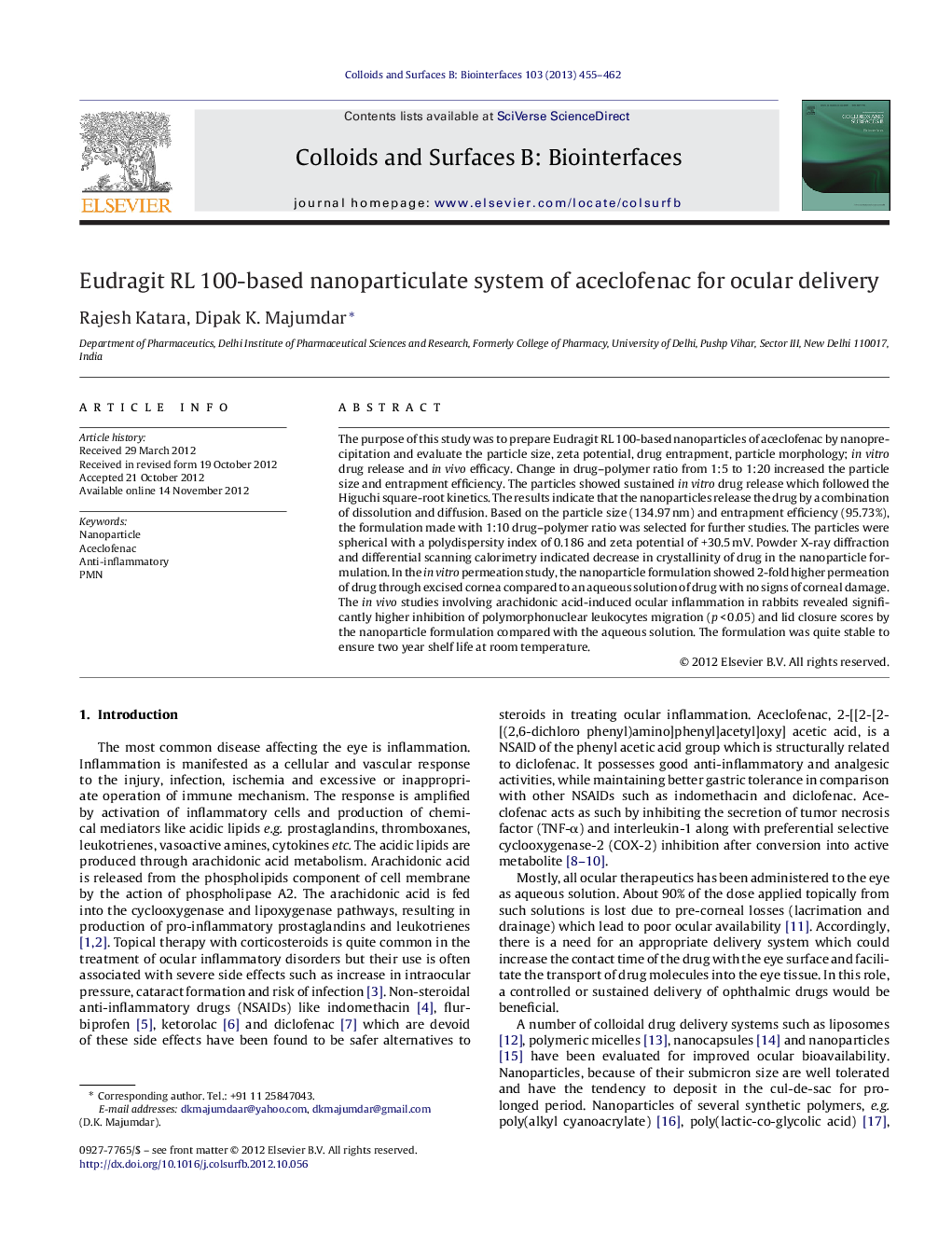| Article ID | Journal | Published Year | Pages | File Type |
|---|---|---|---|---|
| 600380 | Colloids and Surfaces B: Biointerfaces | 2013 | 8 Pages |
The purpose of this study was to prepare Eudragit RL 100-based nanoparticles of aceclofenac by nanoprecipitation and evaluate the particle size, zeta potential, drug entrapment, particle morphology; in vitro drug release and in vivo efficacy. Change in drug–polymer ratio from 1:5 to 1:20 increased the particle size and entrapment efficiency. The particles showed sustained in vitro drug release which followed the Higuchi square-root kinetics. The results indicate that the nanoparticles release the drug by a combination of dissolution and diffusion. Based on the particle size (134.97 nm) and entrapment efficiency (95.73%), the formulation made with 1:10 drug–polymer ratio was selected for further studies. The particles were spherical with a polydispersity index of 0.186 and zeta potential of +30.5 mV. Powder X-ray diffraction and differential scanning calorimetry indicated decrease in crystallinity of drug in the nanoparticle formulation. In the in vitro permeation study, the nanoparticle formulation showed 2-fold higher permeation of drug through excised cornea compared to an aqueous solution of drug with no signs of corneal damage. The in vivo studies involving arachidonic acid-induced ocular inflammation in rabbits revealed significantly higher inhibition of polymorphonuclear leukocytes migration (p < 0.05) and lid closure scores by the nanoparticle formulation compared with the aqueous solution. The formulation was quite stable to ensure two year shelf life at room temperature.
Graphical abstractFigure optionsDownload full-size imageDownload as PowerPoint slideHighlights► Aceclofenac loaded Eudragit RL 100 nanoparticles were prepared by nanoprecipitation method. ► Physicochemical properties of the nanoparticles were evaluated. ► The anti-inflammatory activity was determined against arachidonic acid-induced ocular inflammation in rabbits. ► Promising in reducing dose frequency and improving patient compliance for ocular delivery.
